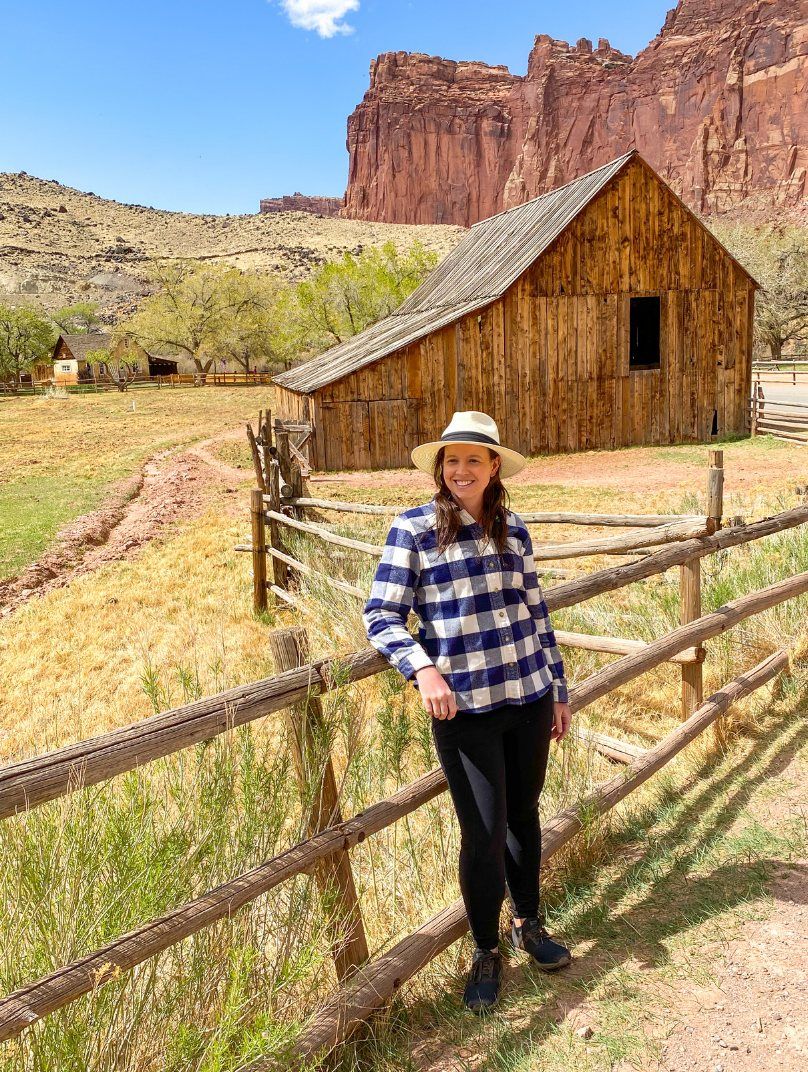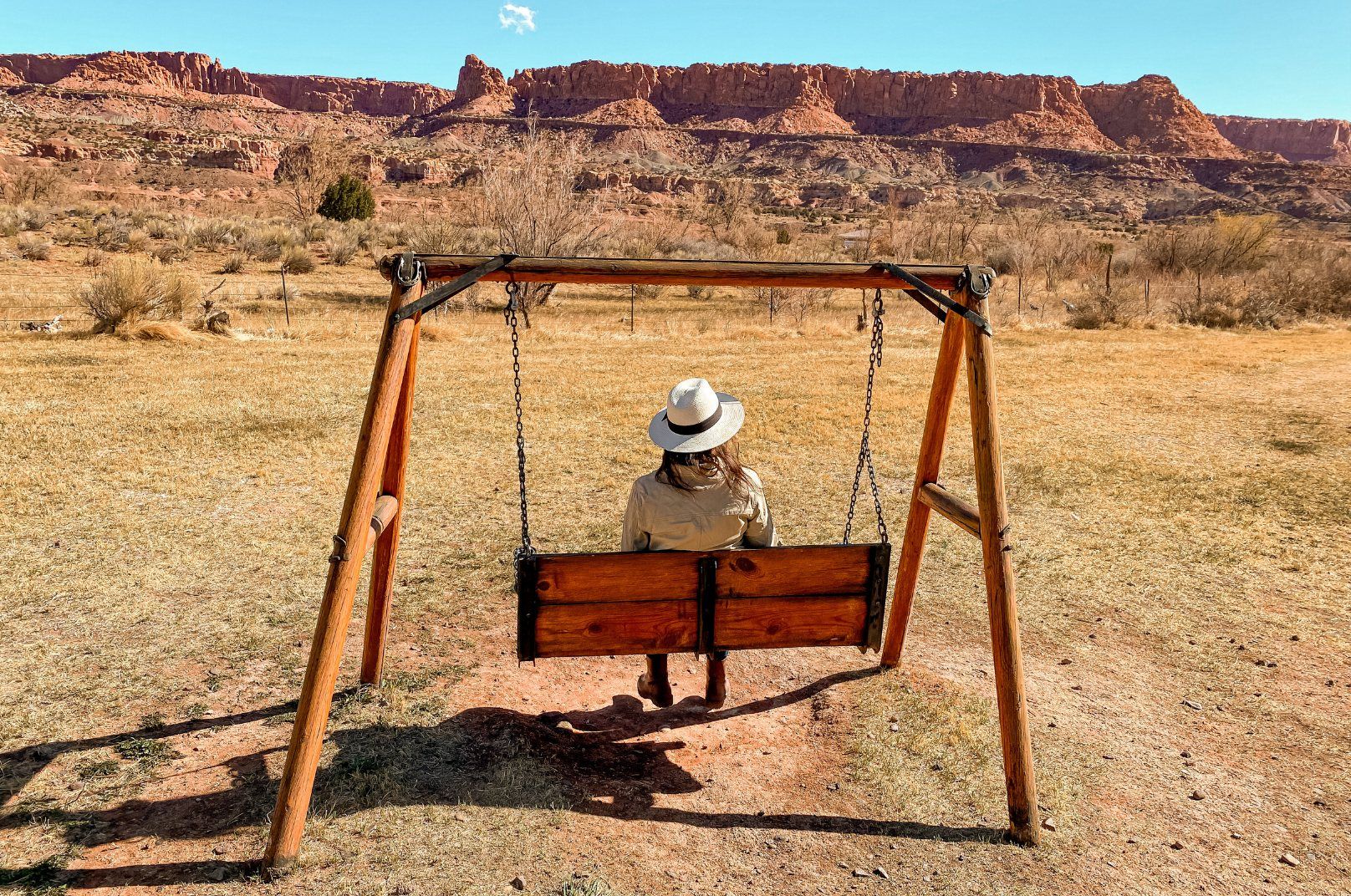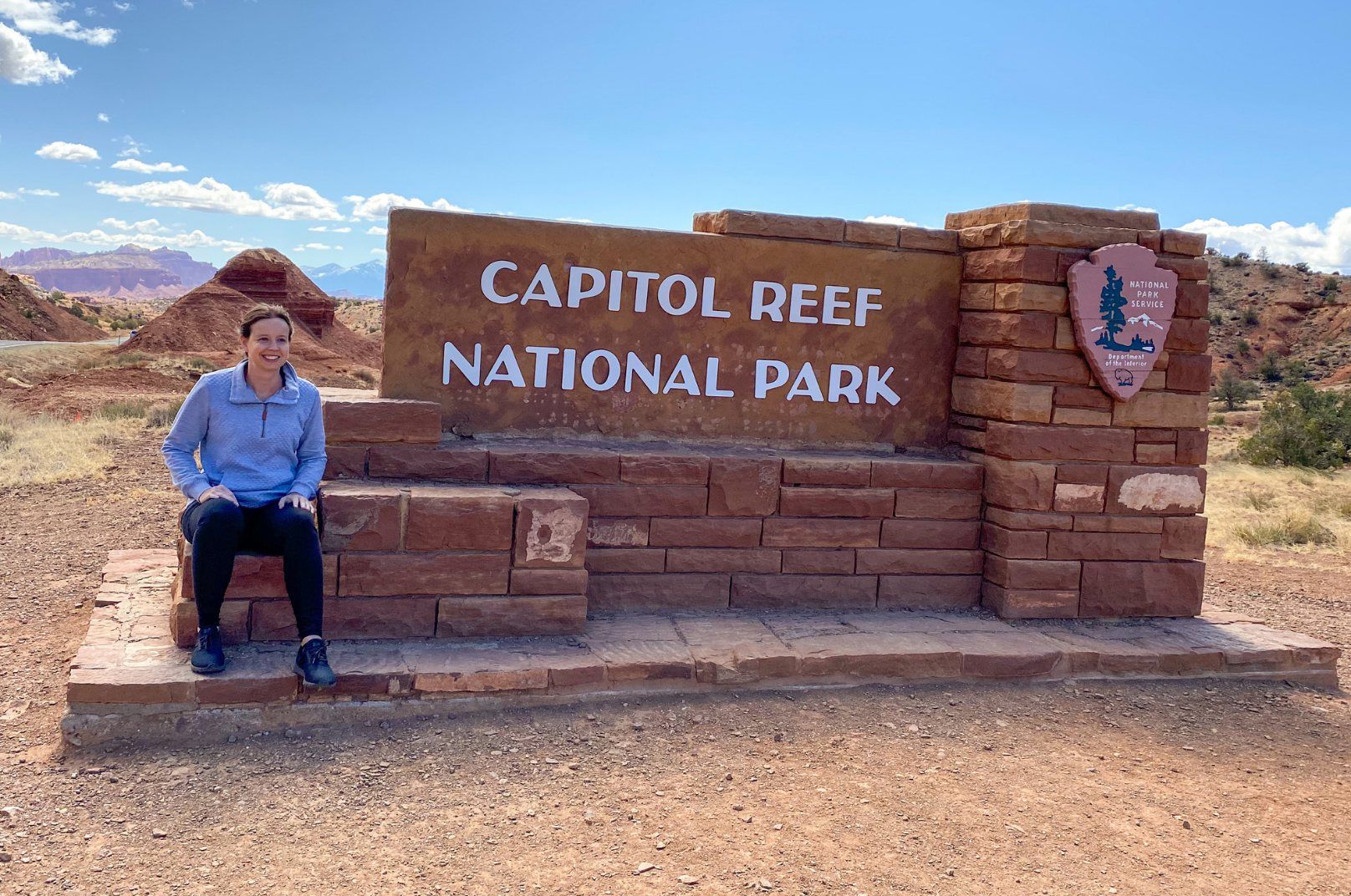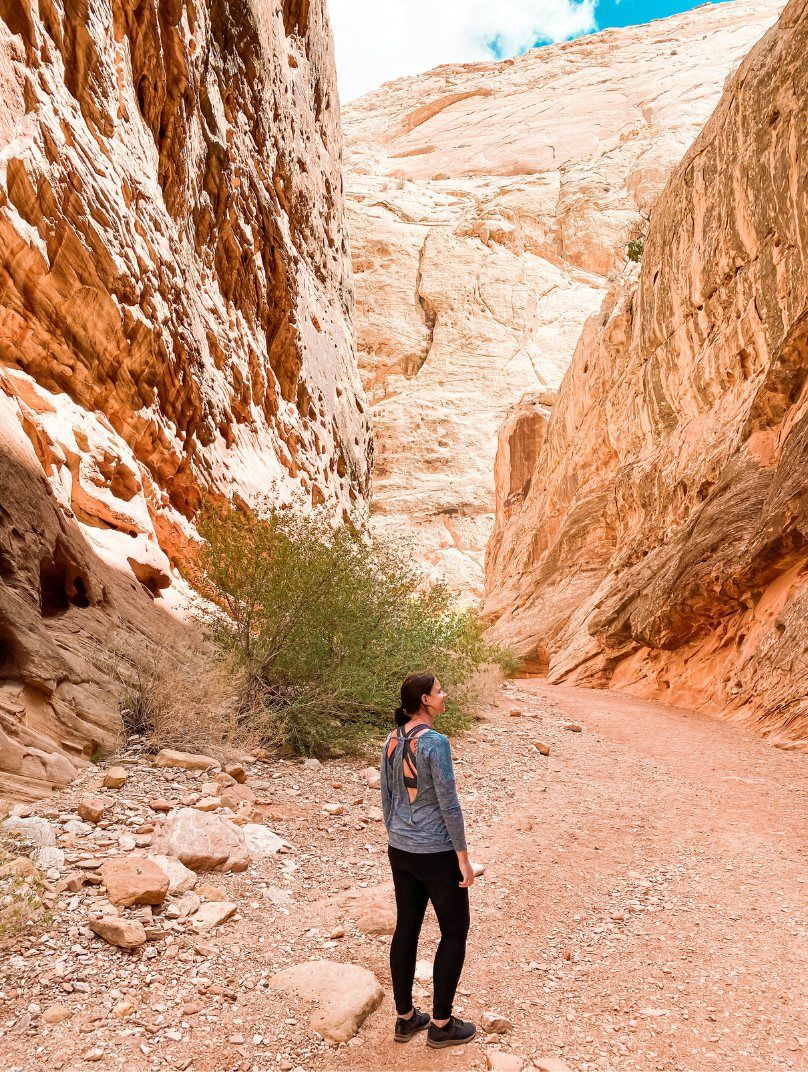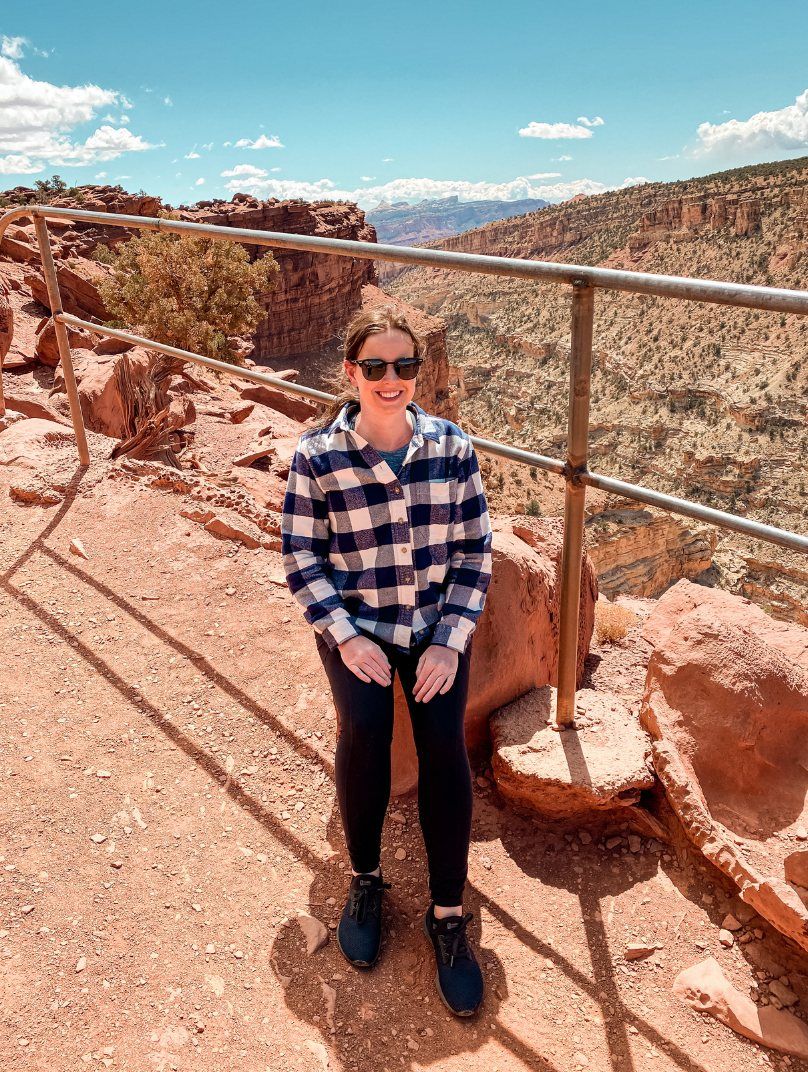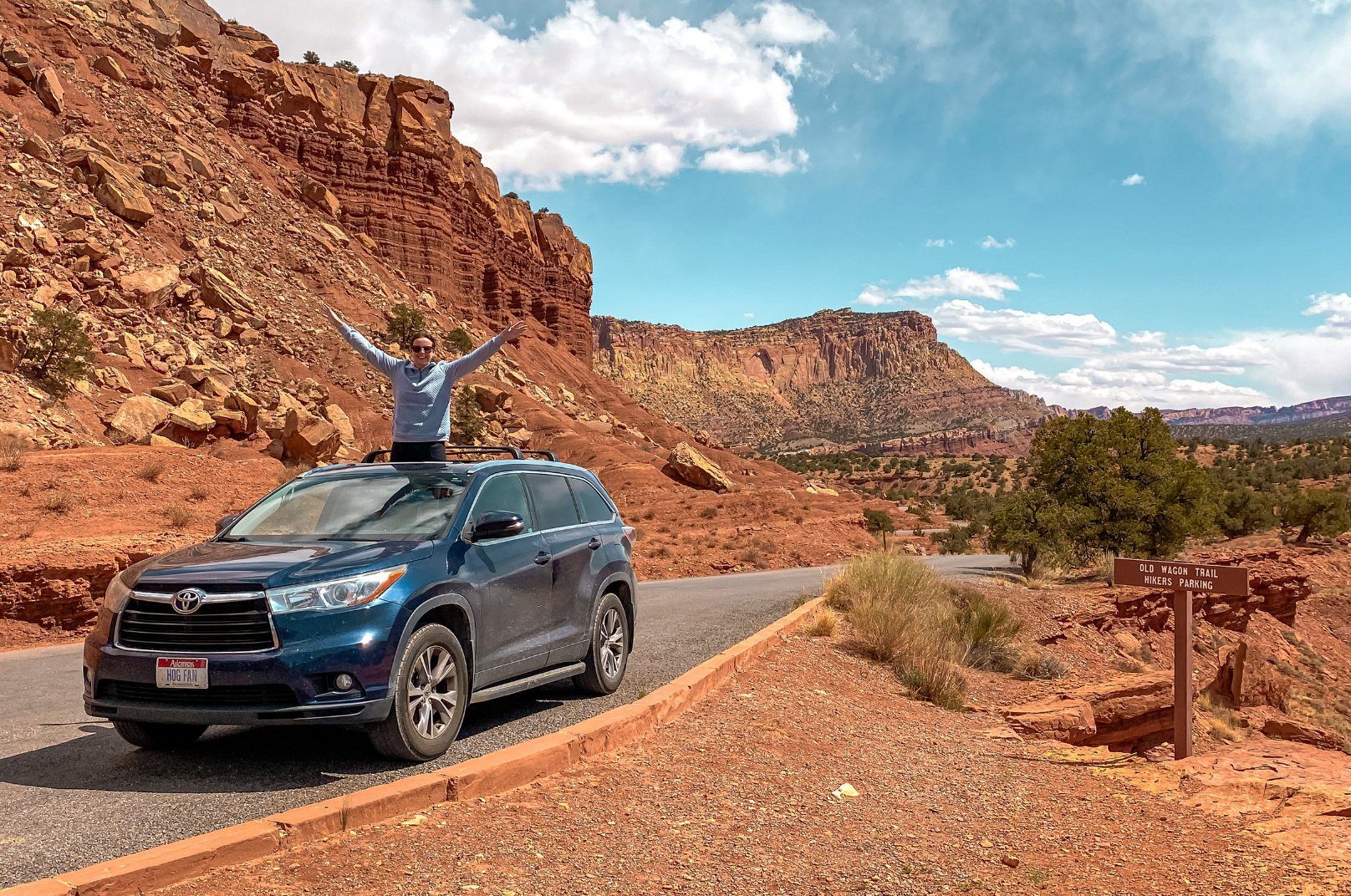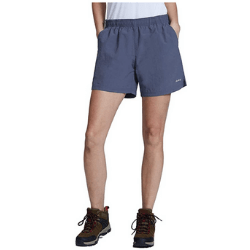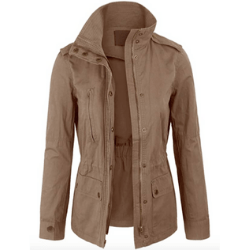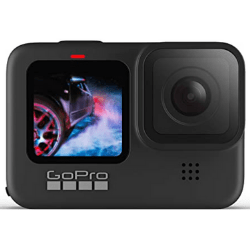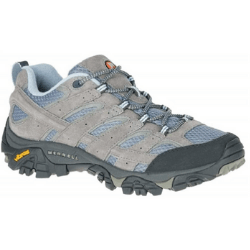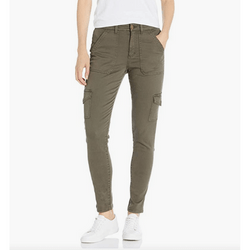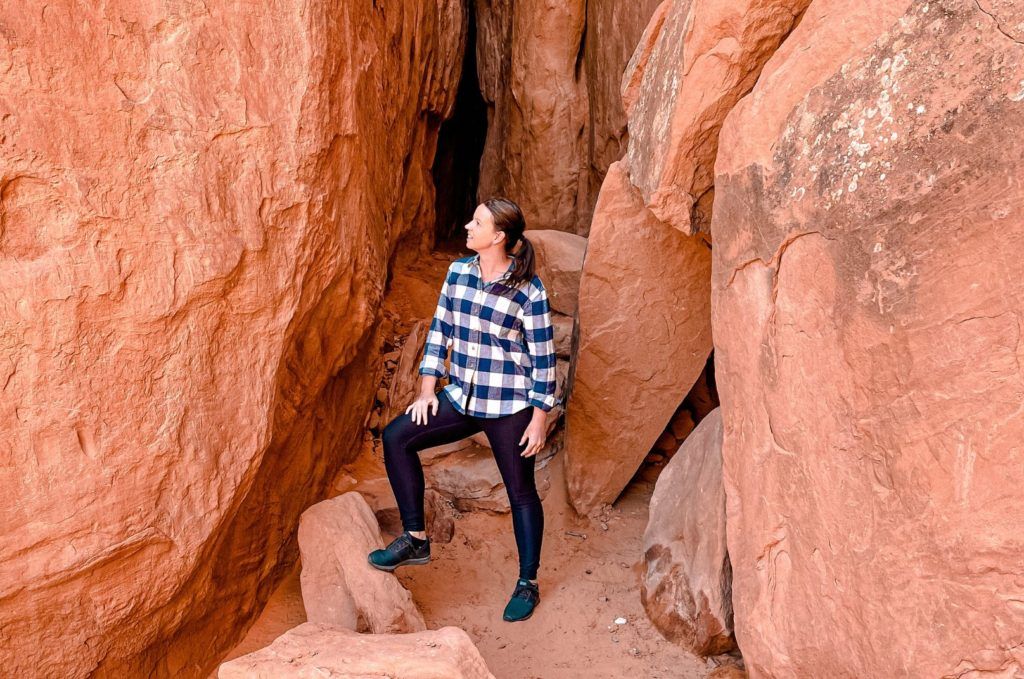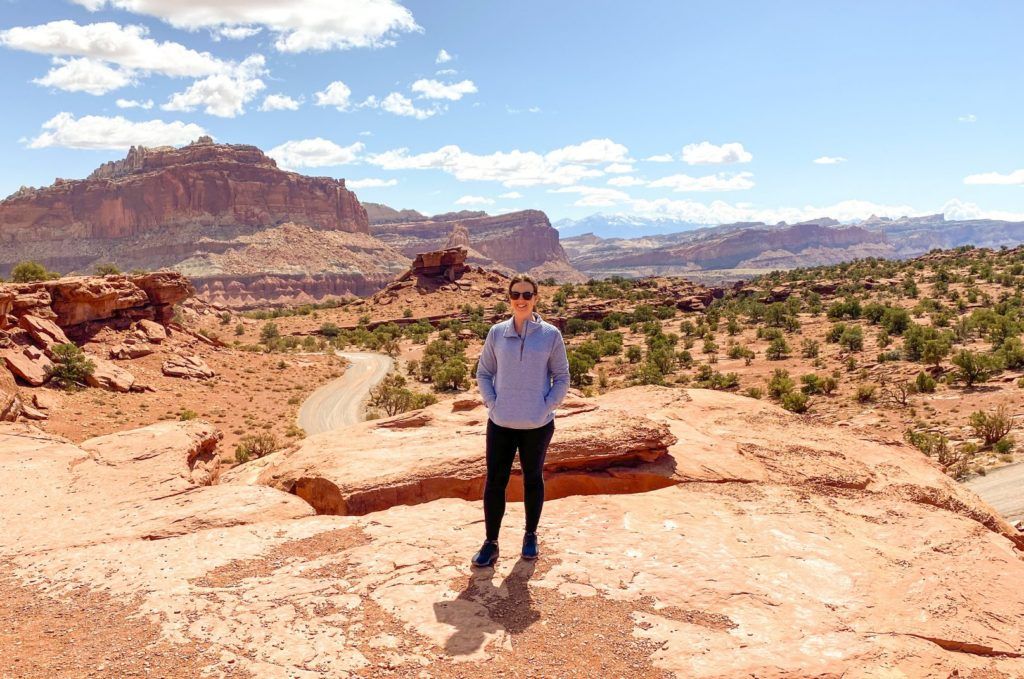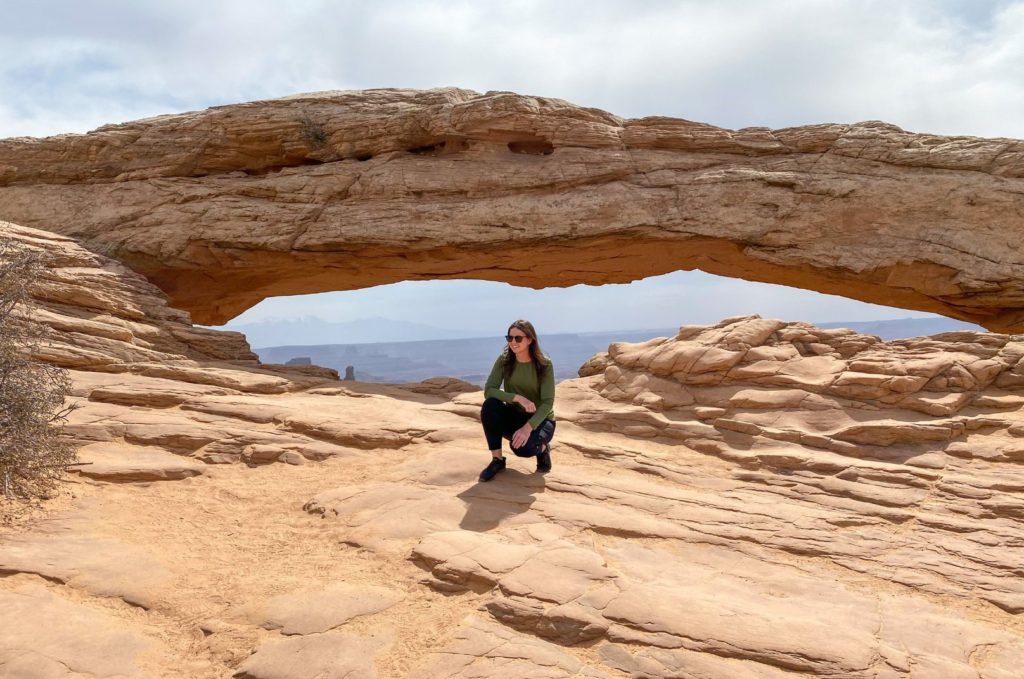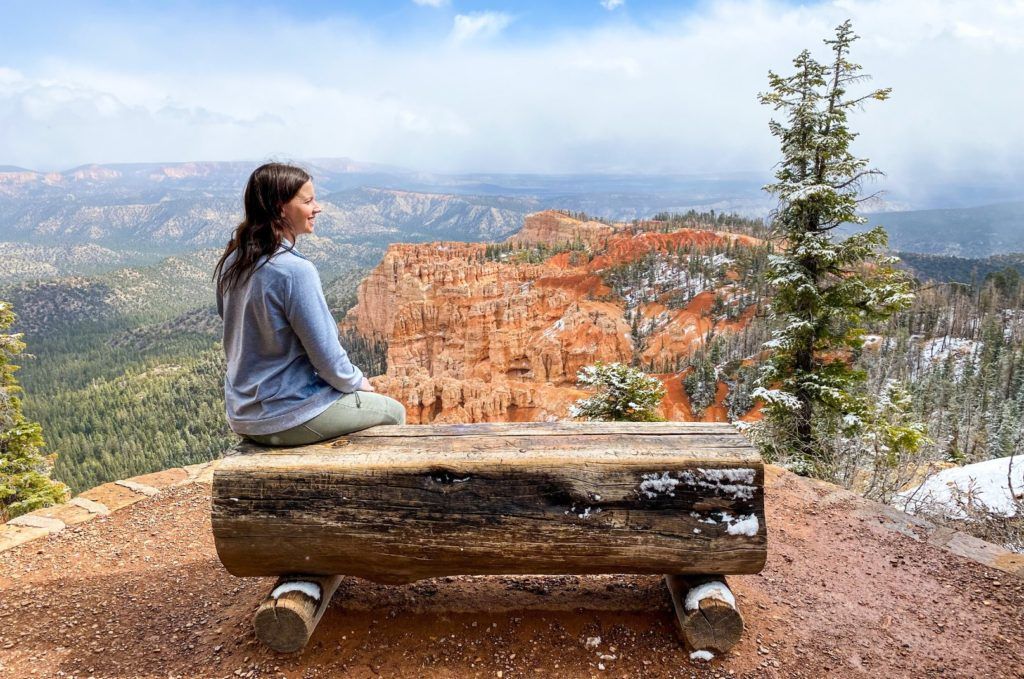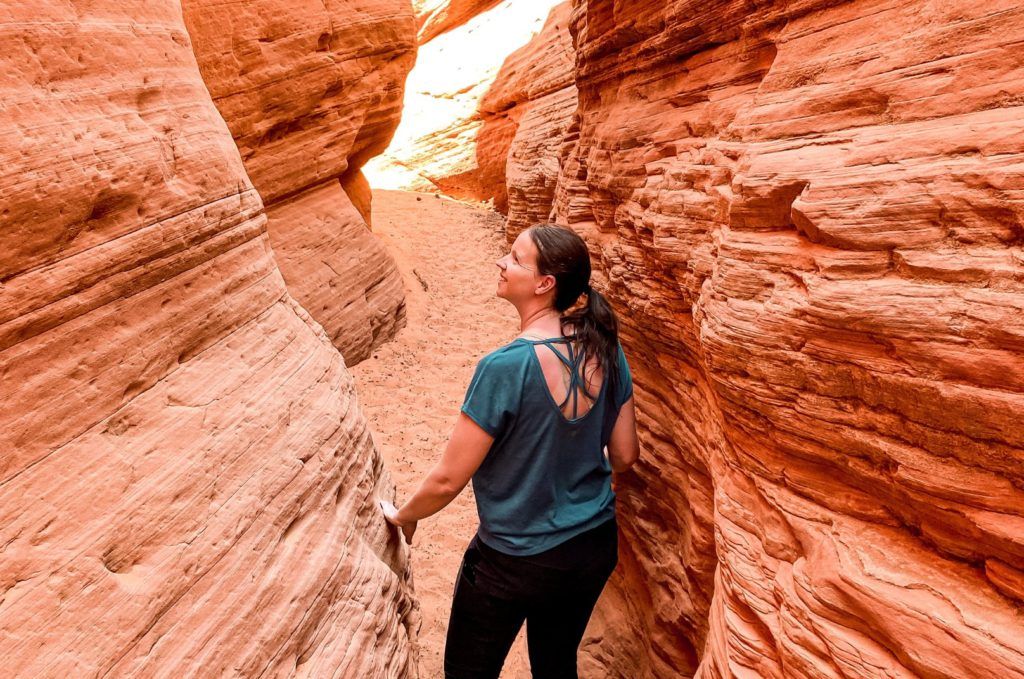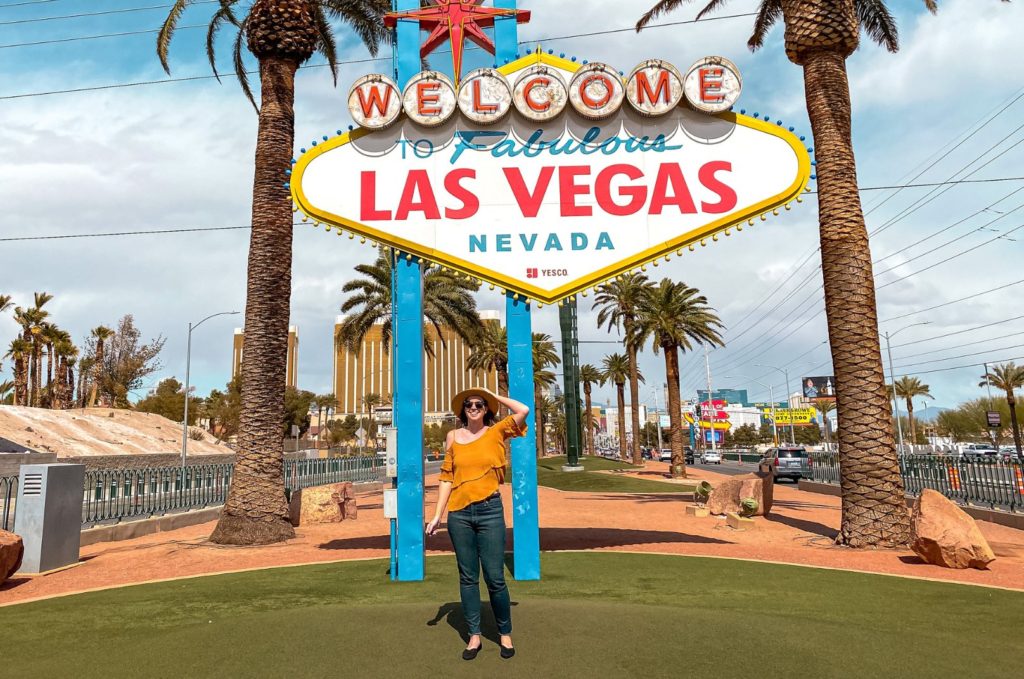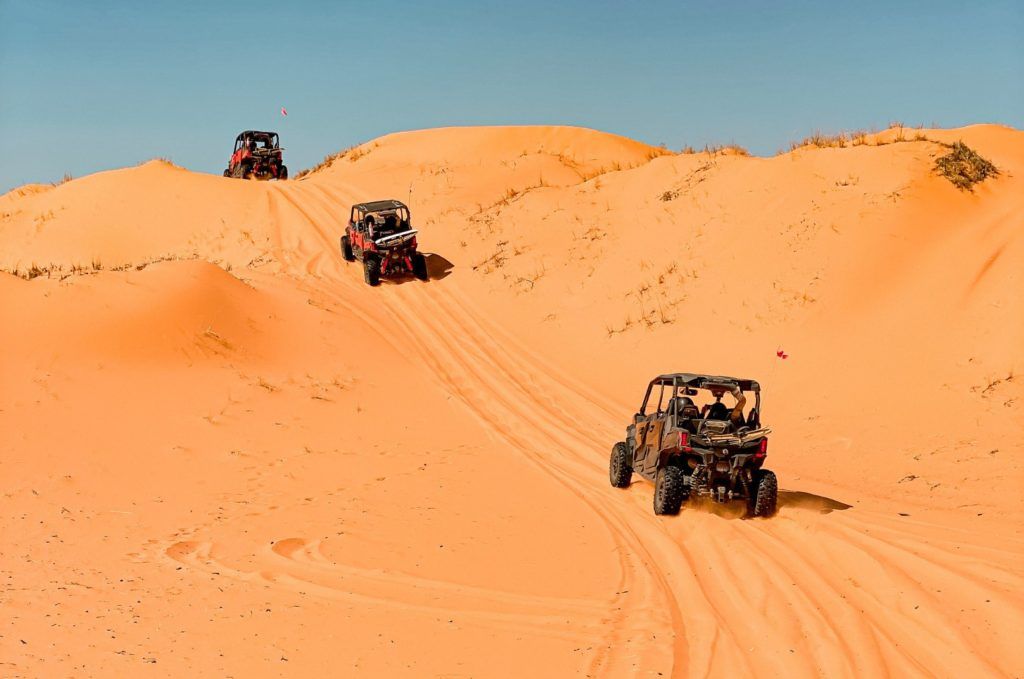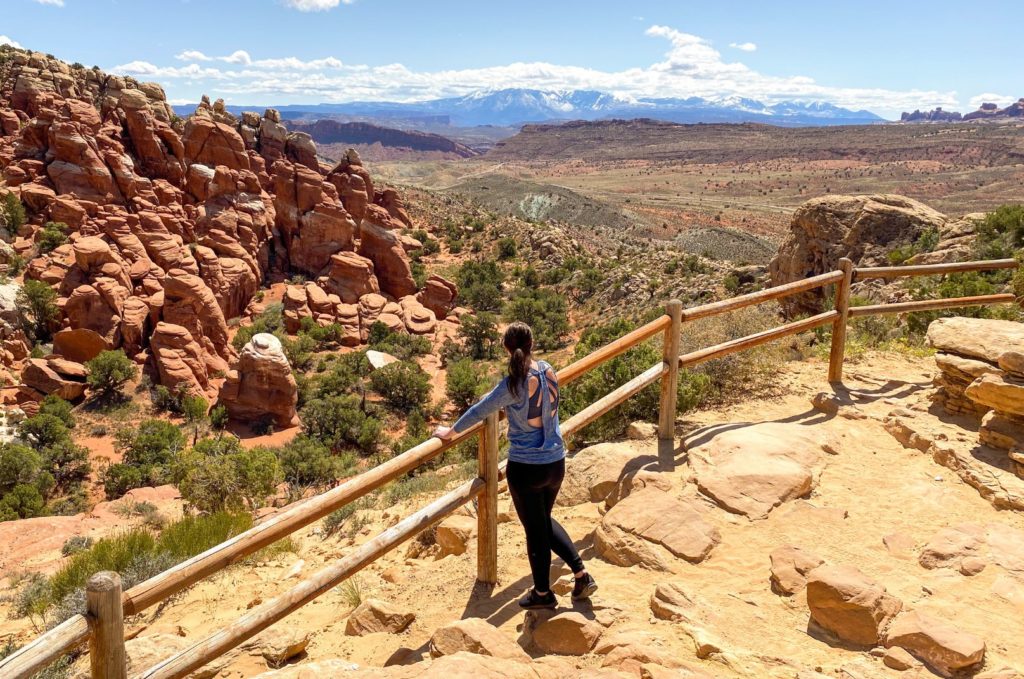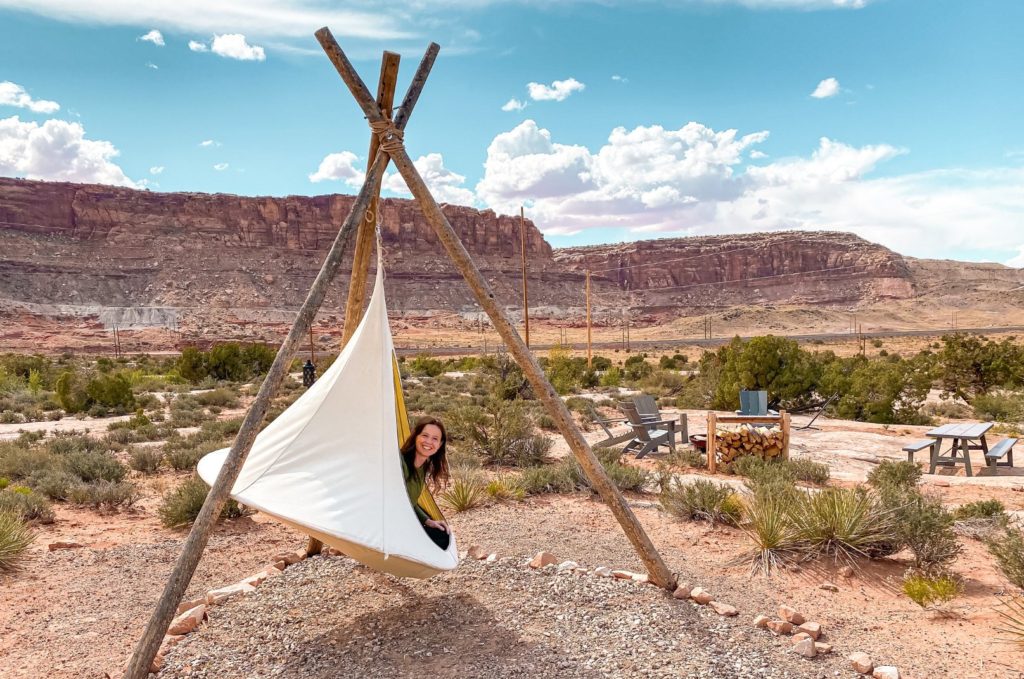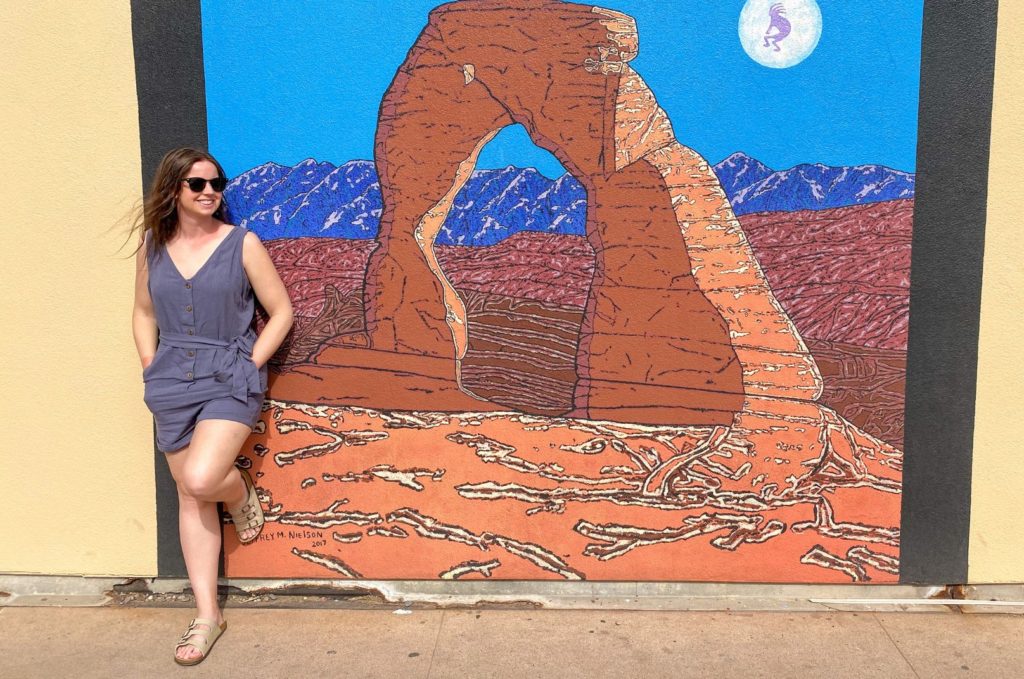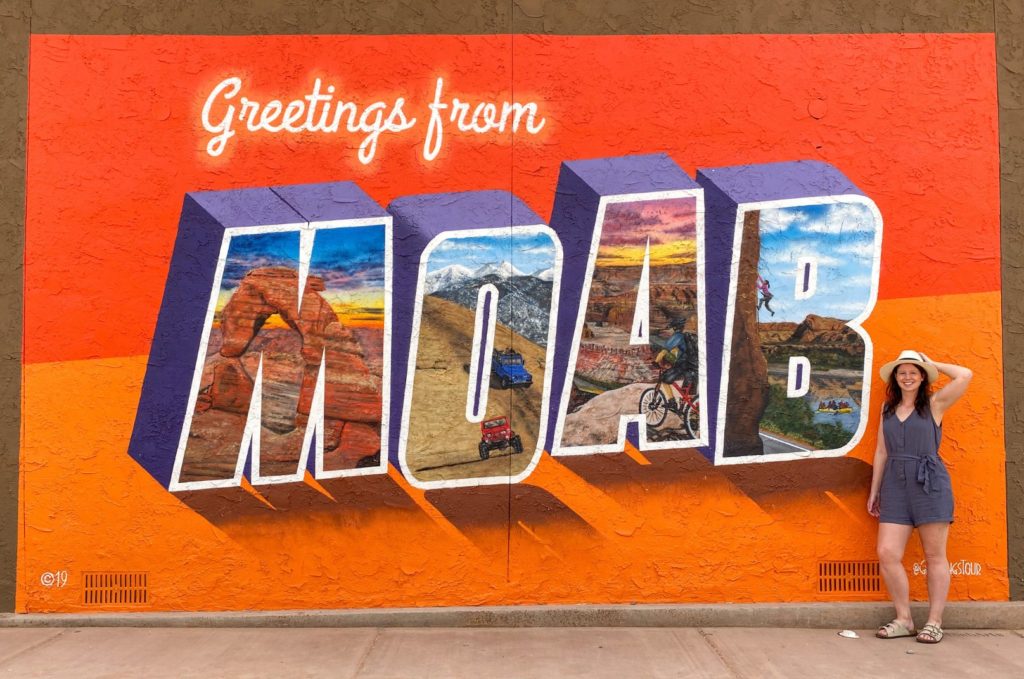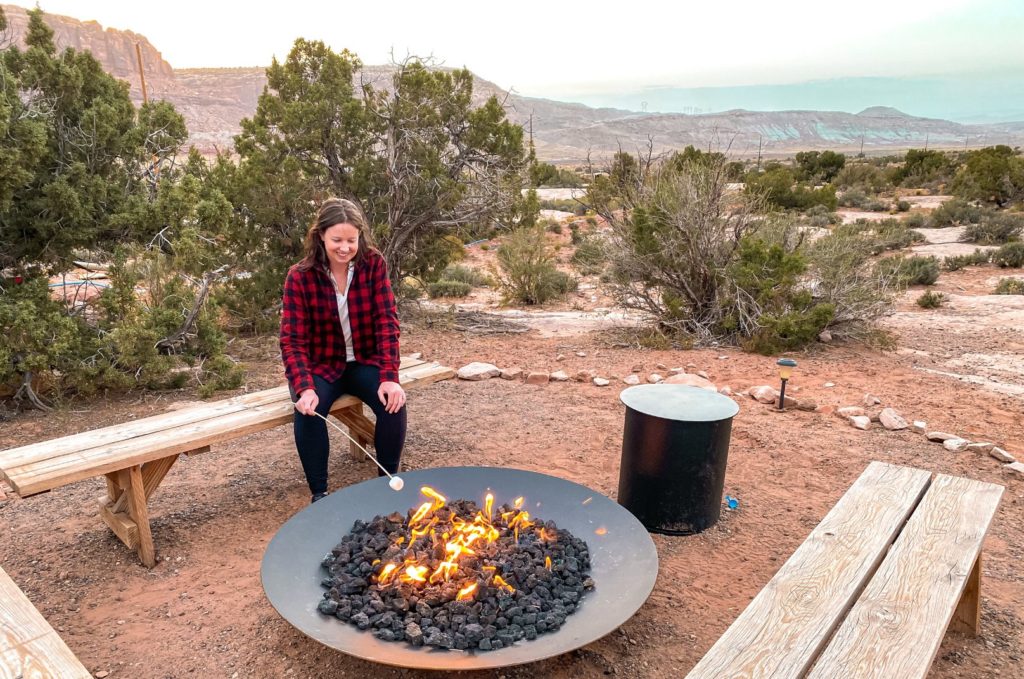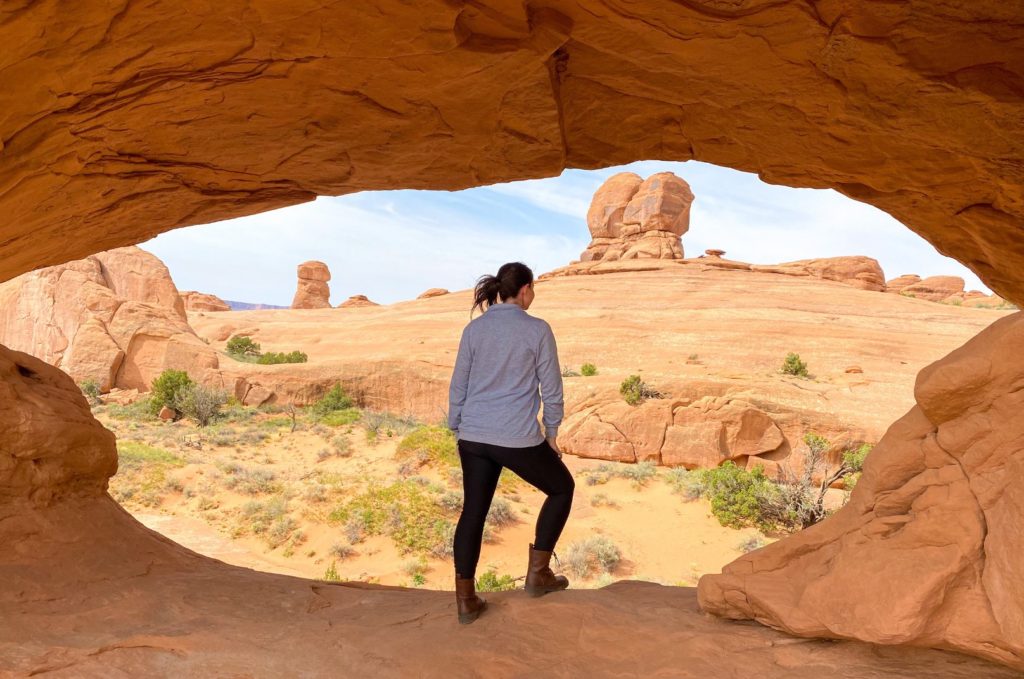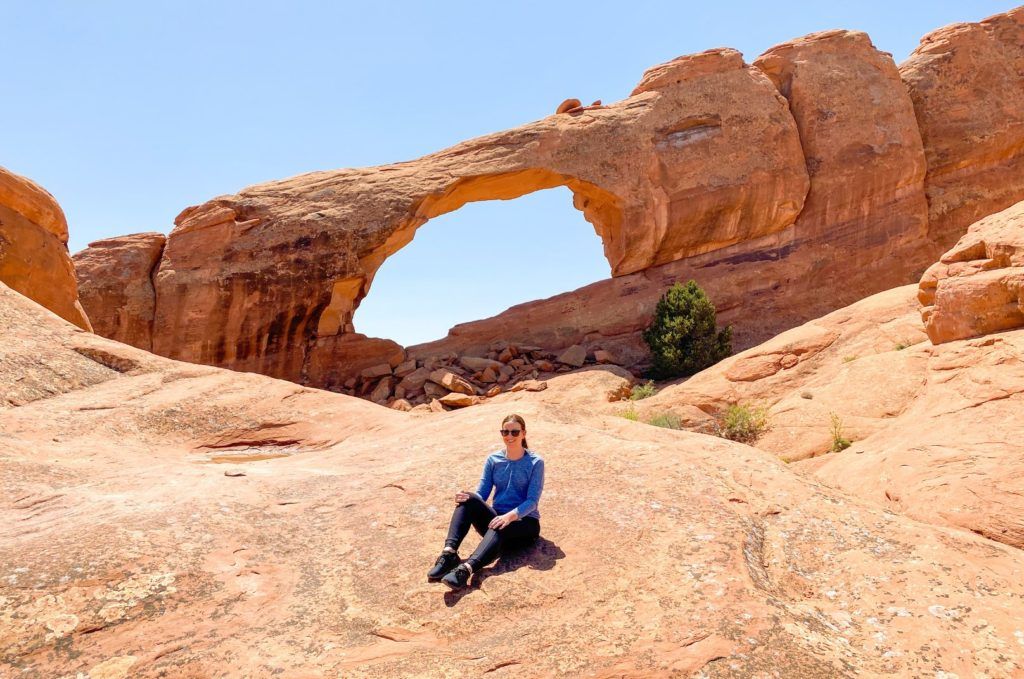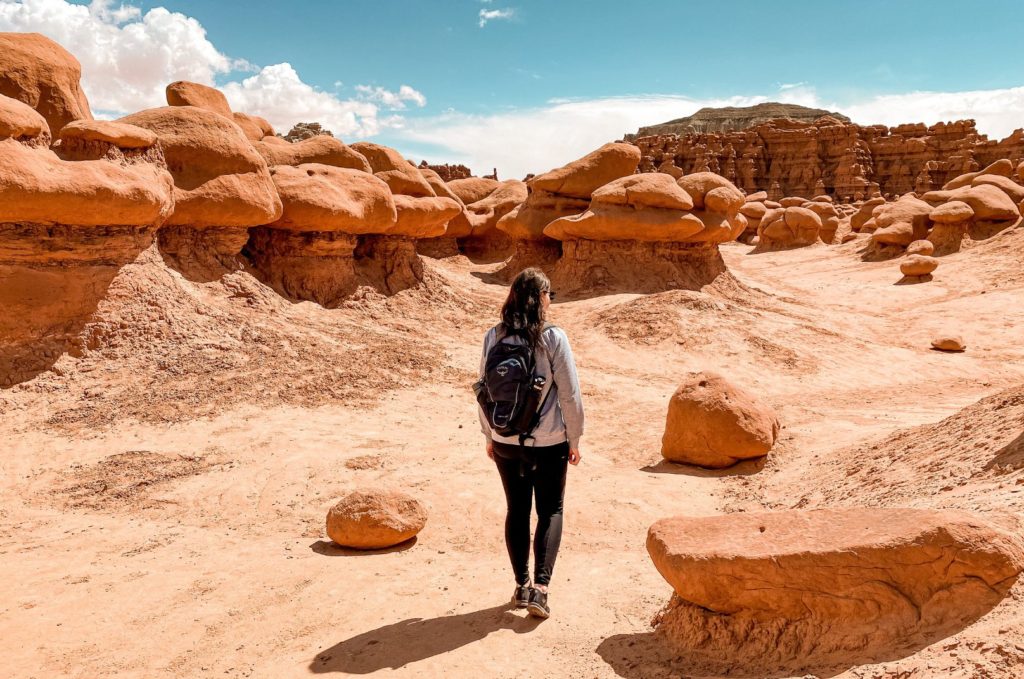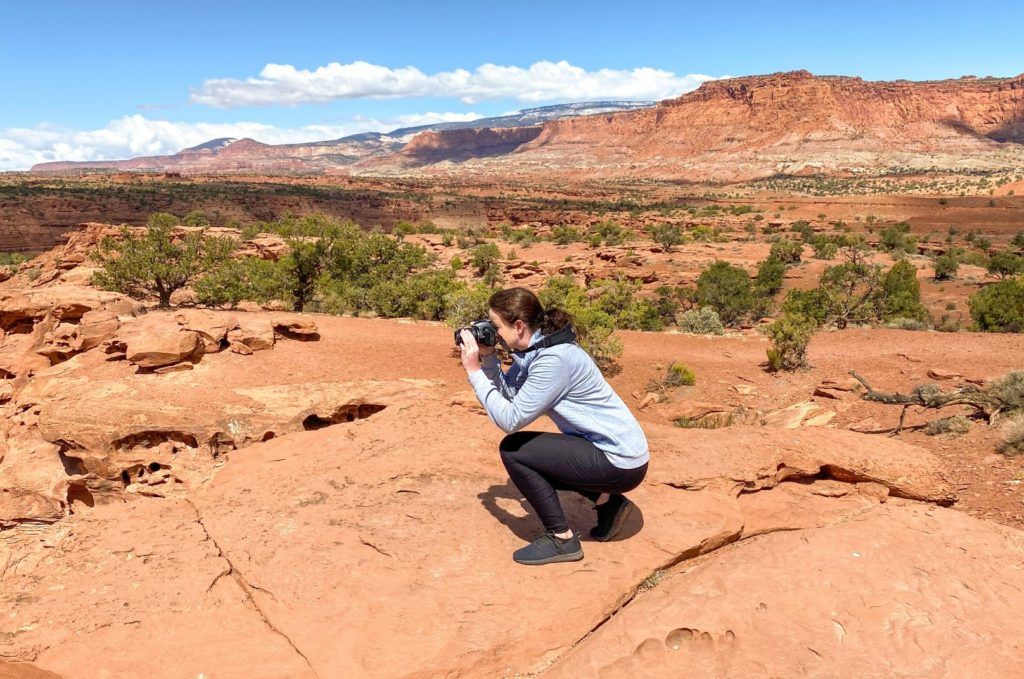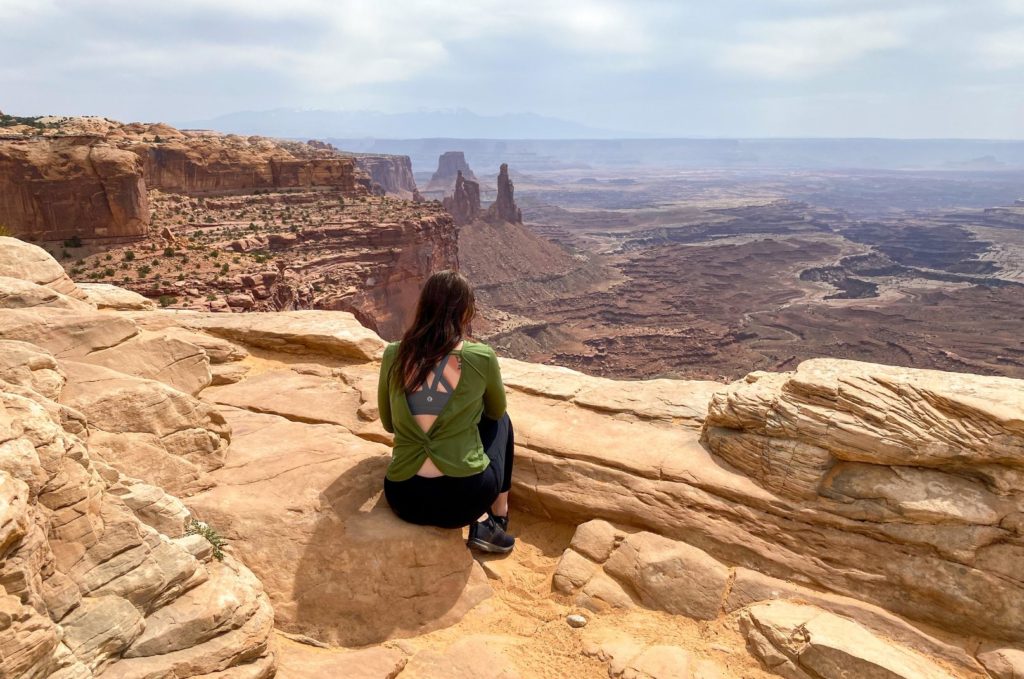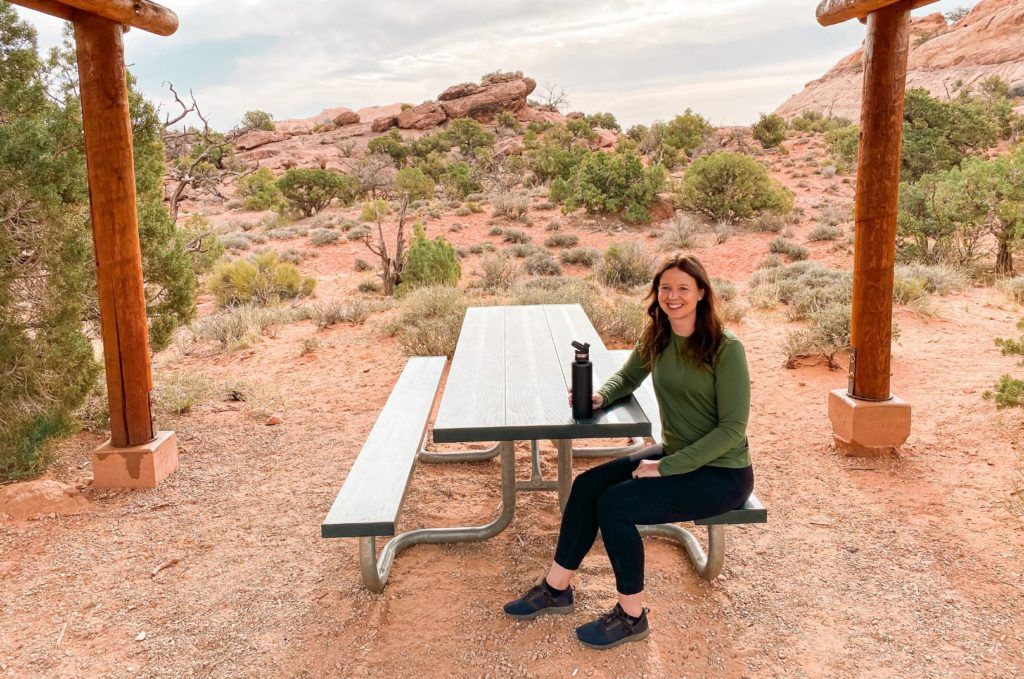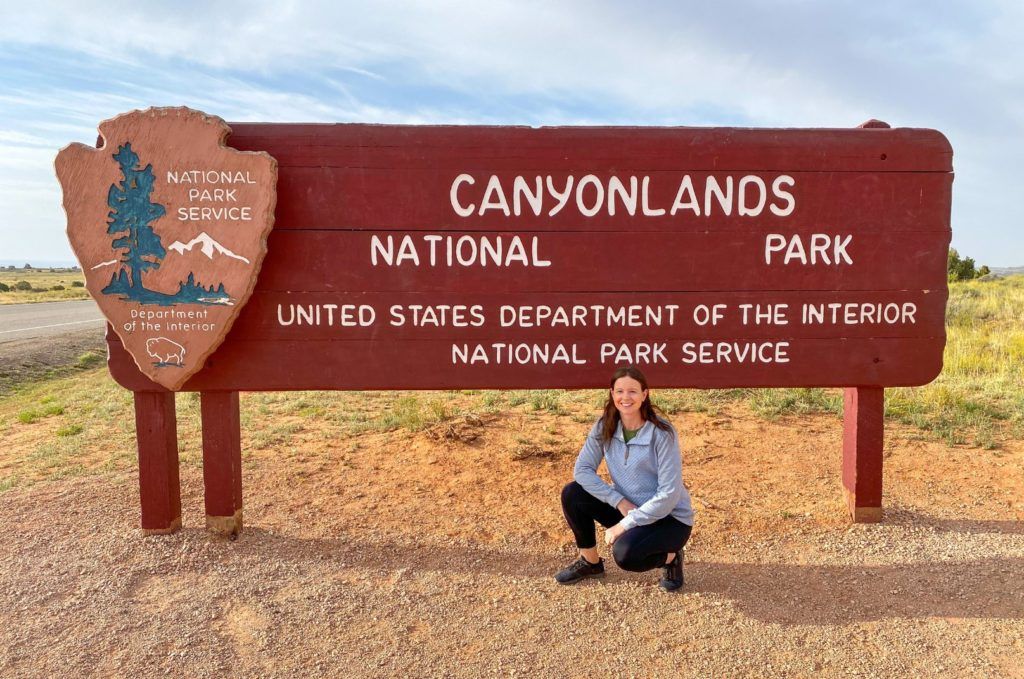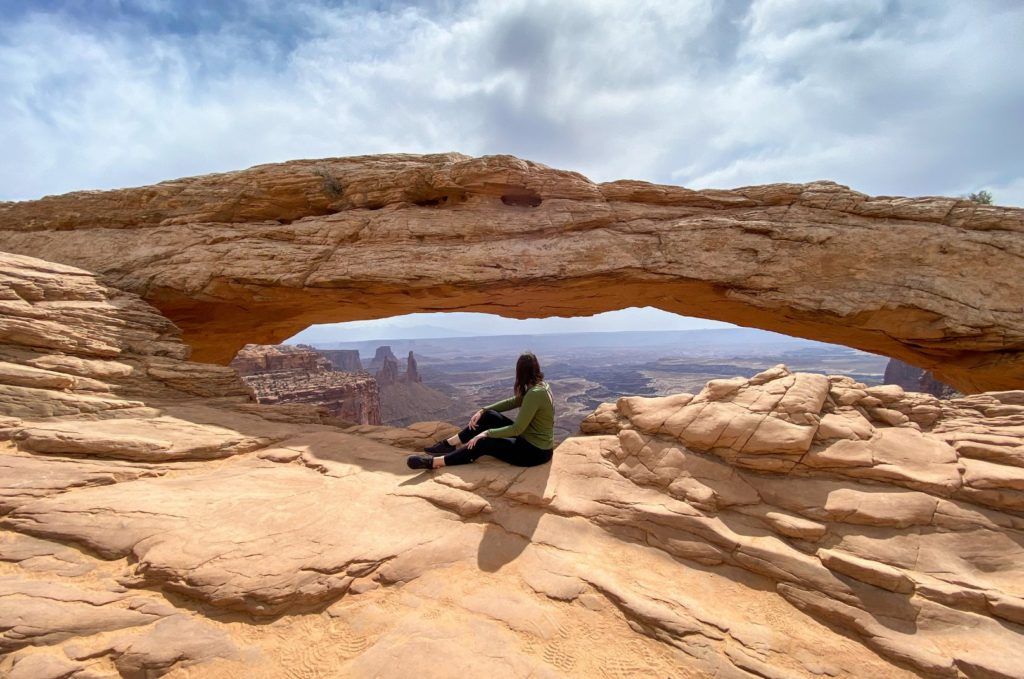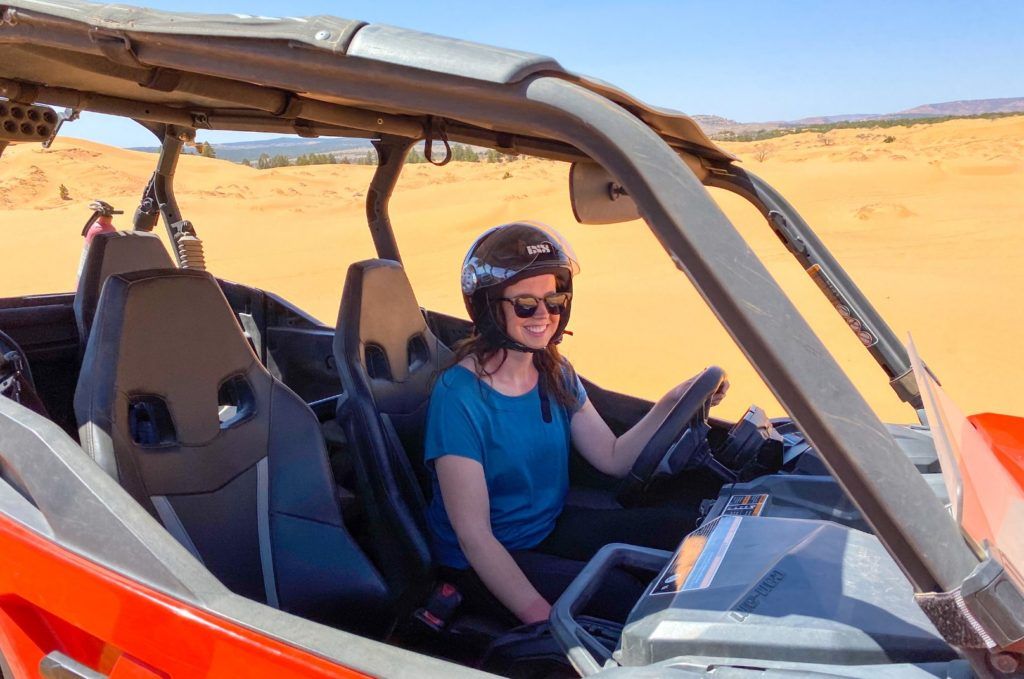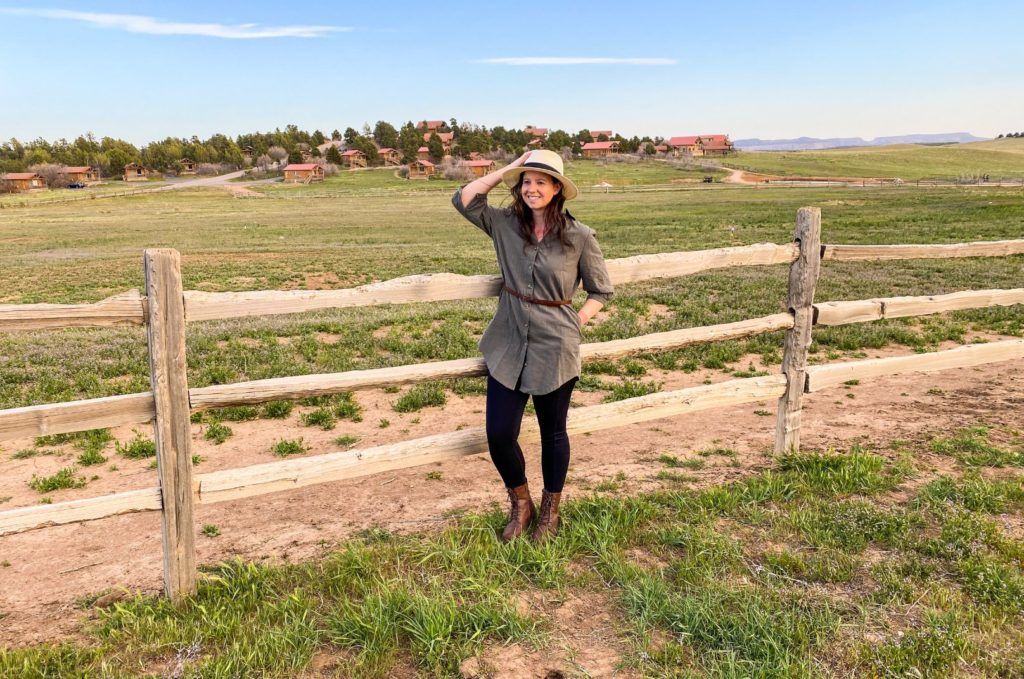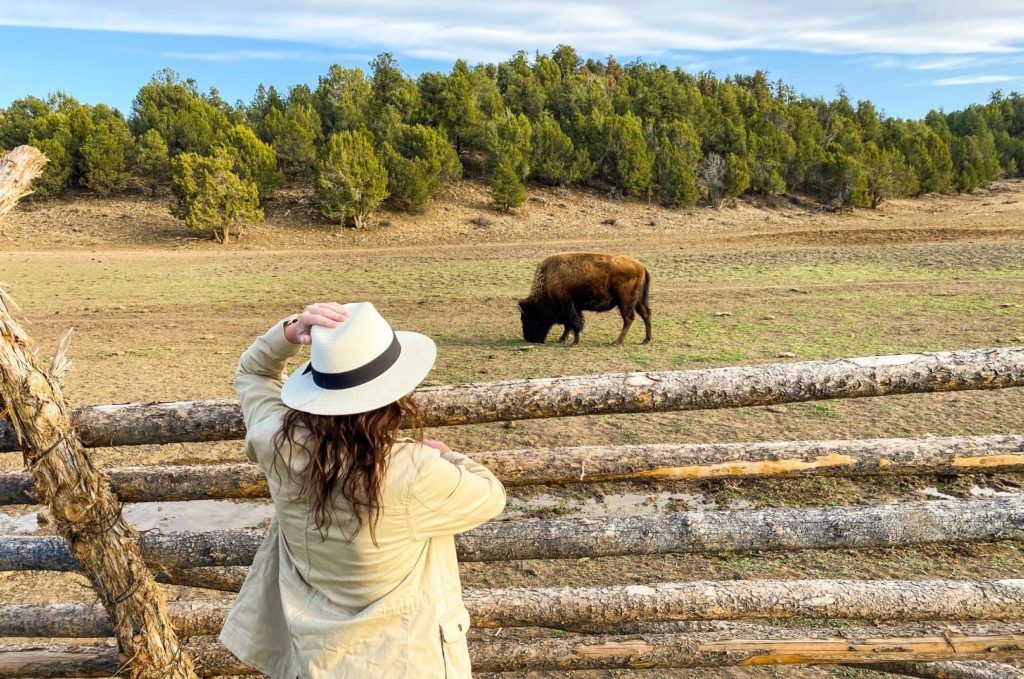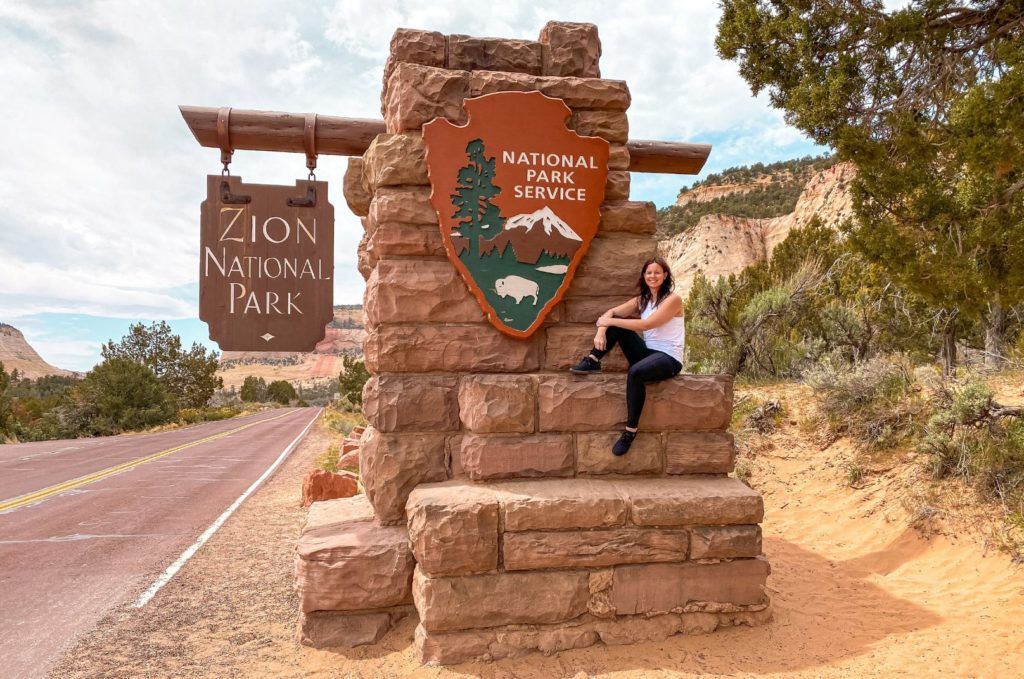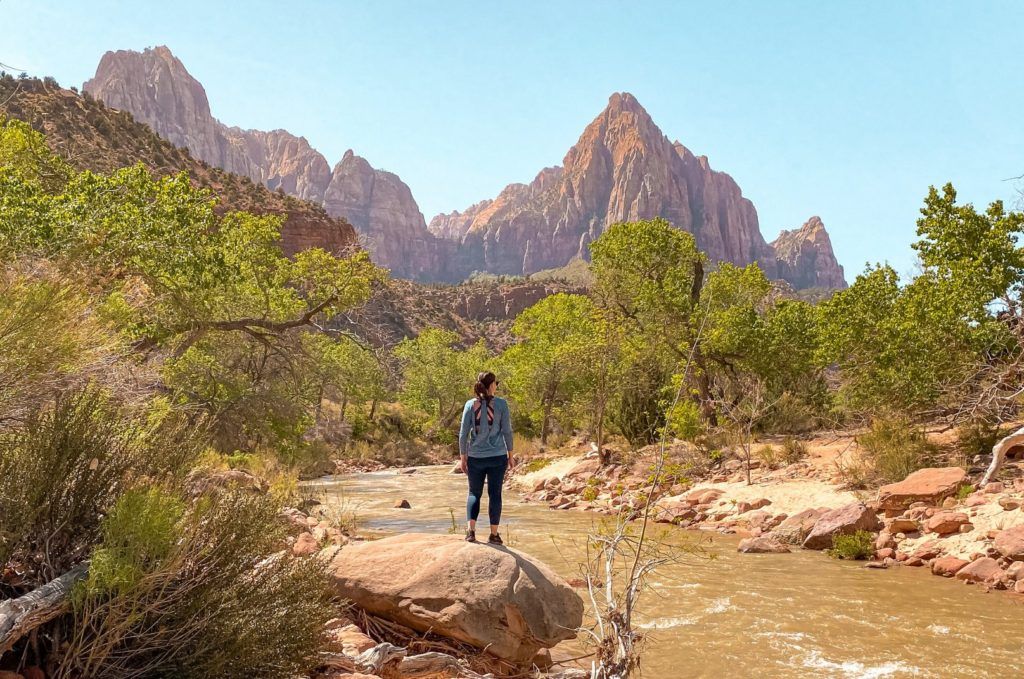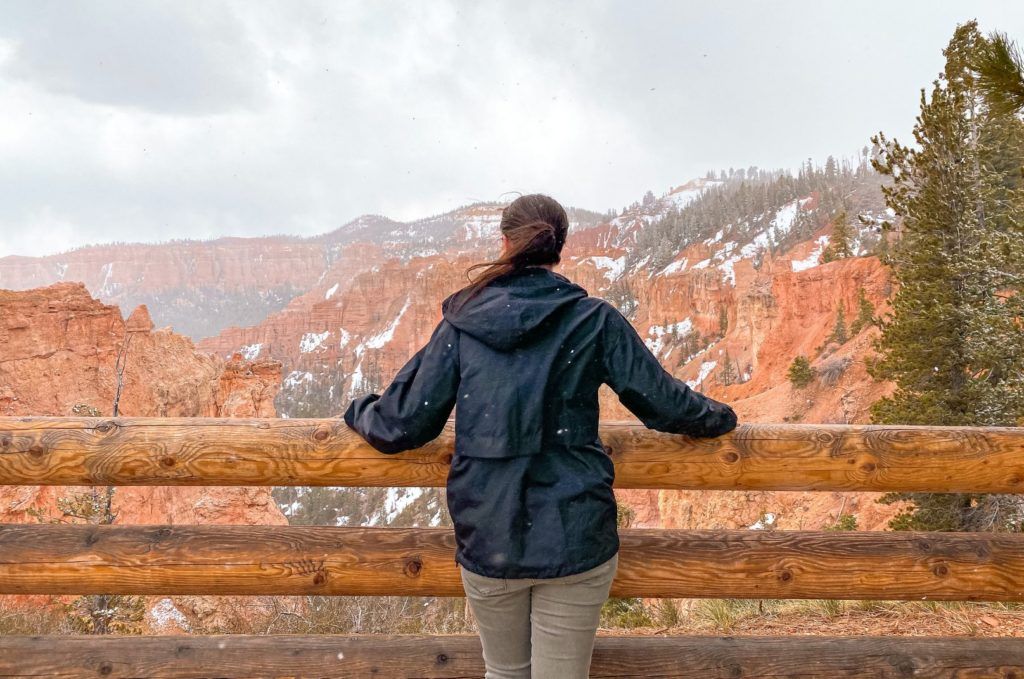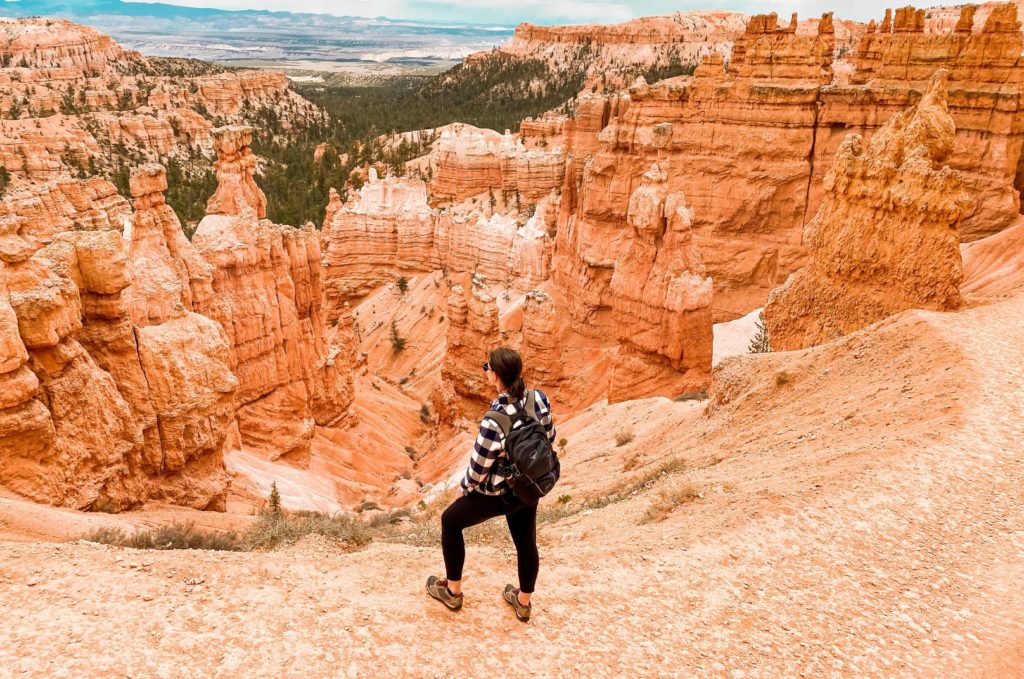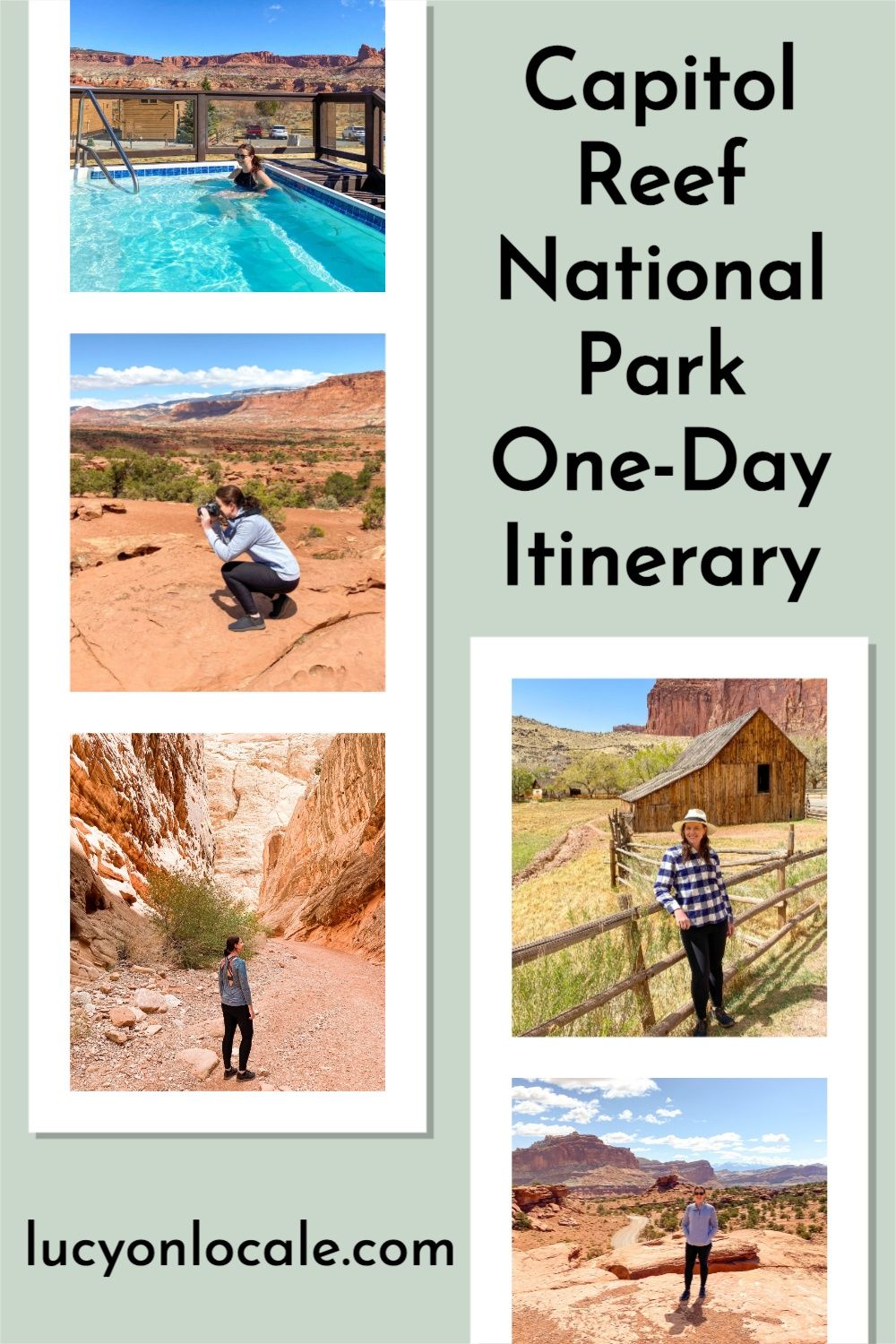
Capitol Reef is one of Utah’s “Mighty Five” national parks, along with Zion, Bryce Canyon, Arches, and Canyonlands. This park is the perfect mid-way point on a Mighty Five road trip, so I’ve created the ultimate Capitol Reef National Park one-day itinerary.
Tips for Visiting Popular National Parks
Fun Fact: The “Capitol” in Capitol Reef National Park refers to the park’s white dome formations that resemble the dome on the American State Capitol Building in Washington, D.C. “Reef” refers to the rocky, coral-like landscape.
On your way to or from Capitol Reef National Park, I highly recommend visiting Goblin Valley State Park.
Here’s the ultimate Capitol Reef National Park one-day itinerary!

When To Go
Capitol Reef National Park is open 24 hours a day, every day of the year. But from November through February, some facilities are closed or operate on reduced hours. This park’s elevation ranges from 6000 to 9000 feet, so it can be cold even in the summer months.
March to June and September to October are the peak travel seasons, so be prepared for limited parking and crowds. You can avoid some of the other visitors by going on weekdays and arriving early in the morning. Daytime temperatures range from the high 50s to high 70s, with nighttime temperatures dropping into the 40s and 30s, so you’ll want layers.
Accommodations are expensive and book up fast during the spring and fall months, so make your reservations as far in advance as possible. The spring is a beautiful time to visit because the Fruita Orchards and wildflowers will be in bloom. And in Fall, the foliage is stunning.
The rainy months are July – September, with frequent afternoon thunderstorms that bring heavy rain and, sometimes, lightning. So you’ll need to monitor the weather continuously and don’t start a hike if flash flood warnings are in effect.
June – August is the shoulder season for Capitol Reef. Summer temperatures are more pleasant than Utah’s other Mighty Five national parks, with daytime temperatures rarely going into the 100s, and most trails have some shade.
Winter is the off-season when you can have the park practically to yourself. You’ll have a good chance of snow for unique hiking, backcountry skiing, and snowshoeing from December to February.

What To Do
If you’re only visiting Capitol Reef for a day, arrive as early as possible. This will be your itinerary if you’re coming from Torrey, Bryce Canyon, or Zion. If you’re coming from Arches, Moab, or Canyonlands, you’ll want to do this itinerary in reverse:
Start your day with the scenic drive on Highway 24 until you reach the visitor center. The best stops on this portion of 24 are Panorama Point, Sunset Point Trail, Goosenecks Overlook, and the pull-out in front of The Castle.
After you stop at the visitor center, drive on the scenic drive through the park, making sure to stop at as many pull-offs as possible. When you get back to the Fruita Historic District, have a picnic lunch by the Fremont River, explore the historic buildings, and check out the fruit orchards.
Then head back to Highway 24, going west until you get to the Hickman Bridge/Rim Overlook trailhead. If you want a moderate hike, opt for Hickman Bridge (1.8 miles out and back, 400 ft elevation gain, 1.5-2 hours), which takes you to a natural bridge with beautiful canyon views. If you’re up for a strenuous hike for incredible views of most of the park, choose the Rim Overlook trail (4.6 miles out and back, 1600 ft elevation gain, 2.5-3 hours).
Finish your day by driving the rest of scenic Highway 24 to the western side of the park, then head back to Torrey for the night, or head on to Moab, Arches, or Canyonlands.
If you have a second day to spend in Capitol Reef, rent a 4×4 vehicle (if you don’t already have one) and explore the Cathedral Valley northern part of the park. The Cathedral Valley section of the park has an unpaved loop road that will let you experience some of the most breathtaking and unique landscapes you’ll ever see.
You’ll want to pack out a lunch, have a full tank of gas, and make sure you stop at the Temple of the Sun and Moon and the Upper Cathedral Valley Overlook.

Know Before You Go
 Capitol Reef is open year-round, but some trails, facilities, and roads close due to snow and ice in winter and flash flooding in the summer.
Capitol Reef is open year-round, but some trails, facilities, and roads close due to snow and ice in winter and flash flooding in the summer.
 You can pick apples, peaches, cherries, pears, plums, apricots, and almonds from the park’s orchards for free, and there’s a small fee to bring fruit out of the orchard. Fenced orchards are open from 9:00 am to 5:00 pm, and unfenced orchard hours are open from dawn to dusk. Only pick ripe fruit during harvest season (usually July to October). There will be signs indicating which trees can be picked.
You can pick apples, peaches, cherries, pears, plums, apricots, and almonds from the park’s orchards for free, and there’s a small fee to bring fruit out of the orchard. Fenced orchards are open from 9:00 am to 5:00 pm, and unfenced orchard hours are open from dawn to dusk. Only pick ripe fruit during harvest season (usually July to October). There will be signs indicating which trees can be picked.
 I highly recommend having a walking stick on every trail. Capitol Reef’s trails can be steep, on cliff edges, and slippery with wet rocks, ice, or loose rocks.
I highly recommend having a walking stick on every trail. Capitol Reef’s trails can be steep, on cliff edges, and slippery with wet rocks, ice, or loose rocks.
 There is no food in the park, so I recommend packing out your lunch and having snacks with you.
There is no food in the park, so I recommend packing out your lunch and having snacks with you.
 There is limited cell service inside the park, so download or screenshot maps and trail guides before you arrive. There is WiFi at the visitor center.
There is limited cell service inside the park, so download or screenshot maps and trail guides before you arrive. There is WiFi at the visitor center.
 Pets are only allowed on public roadways, in campgrounds, and on the trail from the visitor center to the campground, and they must be on a leash no more than six feet long.
Pets are only allowed on public roadways, in campgrounds, and on the trail from the visitor center to the campground, and they must be on a leash no more than six feet long.
 Capitol Reef is at a high altitude (between 6000 and 9000 feet), so it’s easy to get “winded.” Take lots of breaks, sit down when you can, and always have plenty of water, sun protection, and snacks.
Capitol Reef is at a high altitude (between 6000 and 9000 feet), so it’s easy to get “winded.” Take lots of breaks, sit down when you can, and always have plenty of water, sun protection, and snacks.
 There is no gas inside the park, so make sure you have a full tank before getting to the park entrance.
There is no gas inside the park, so make sure you have a full tank before getting to the park entrance.
 In the winter, snowshoes or shoe traction devices are recommended on trails.
In the winter, snowshoes or shoe traction devices are recommended on trails.
 Bikes, including e-bikes, can only be ridden on designated roads, around campgrounds, and on the trail between the visitor center and campground.
Bikes, including e-bikes, can only be ridden on designated roads, around campgrounds, and on the trail between the visitor center and campground.

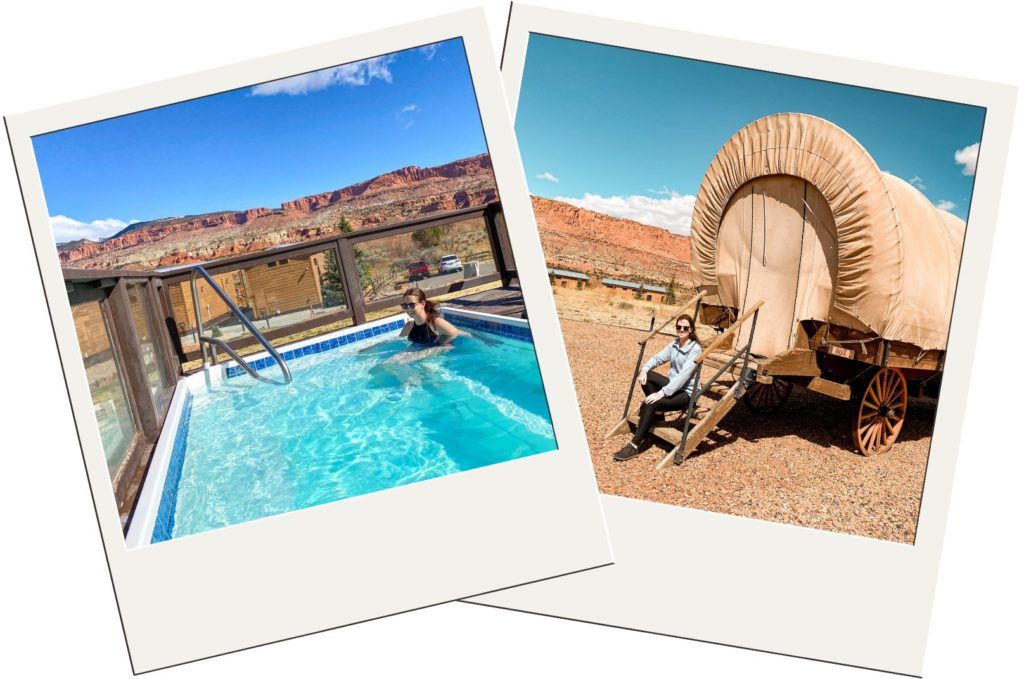
Where To Stay
Capitol Reef has many accommodation options in the nearby towns. So I’ve rounded up the best hotels, vacation homes, and glamping near Capitol Reef.
For camping, I highly recommend staying at the Fruita Campground inside the park. This campground is open from March to October with 71 spaces, picnic tables, fire grates/grills, restrooms, water, and a dump station. These sites book up FAST, so reserve yours as early as possible.
If you’re bringing an RV or motorhome and want a full hook-up, opt for the Wonderland RV Park or Sandcreek RV Park.

Shop My National Park Essentials

Is there anything you’d add to this Capitol Reef National Park one-day itinerary? Let us know in the comments!

Plan The Rest Of Your Trip

Recommended Tours in Capitol Reef

Frequently Asked Questions
Can you do Capitol Reef National Park in a day?
Yes.
If you’re only visiting Capitol Reef for a day, arrive as early as possible. This will be your itinerary if you’re coming from Torrey, Bryce Canyon, or Zion. If you’re coming from Arches, Moab, or Canyonlands, you’ll want to do this itinerary in reverse:
Start your day with the scenic drive on Highway 24 until you reach the visitor center. The best stops on this portion of 24 are Panorama Point, Sunset Point Trail, Goosenecks Overlook, and the pull-out in front of The Castle.
After you stop at the visitor center, drive on the scenic drive through the park, making sure to stop at as many pull-offs as possible. When you get back to the Fruita Historic District, have a picnic lunch by the Fremont River, explore the historic buildings, and check out the fruit orchards.
Then head back to Highway 24, going west until you get to the Hickman Bridge/Rim Overlook trailhead. If you want a moderate hike, opt for Hickman Bridge (1.8 miles out and back, 400 ft elevation gain, 1.5-2 hours), which takes you to a natural bridge with beautiful canyon views. If you’re up for a strenuous hike for incredible views of most of the park, choose the Rim Overlook trail (4.6 miles out and back, 1600 ft elevation gain, 2.5-3 hours).
Finish your day by driving the rest of scenic Highway 24 to the western side of the park, then head back to Torrey for the night, or head on to Moab, Arches, or Canyonlands.
If you have a second day to spend in Capitol Reef, rent a 4×4 vehicle (if you don’t already have one) and explore the Cathedral Valley northern part of the park. The Cathedral Valley section of the park has an unpaved loop road that will let you experience some of the most breathtaking and unique landscapes you’ll ever see.
You’ll want to pack out a lunch, have a full tank of gas, and make sure you stop at the Temple of the Sun and Moon and the Upper Cathedral Valley Overlook.
How much time do I need in Capitol Reef National Park?
1-2 days.
If you’re only visiting Capitol Reef for a day, arrive as early as possible. This will be your itinerary if you’re coming from Torrey, Bryce Canyon, or Zion. If you’re coming from Arches, Moab, or Canyonlands, you’ll want to do this itinerary in reverse:
Start your day with the scenic drive on Highway 24 until you reach the visitor center. The best stops on this portion of 24 are Panorama Point, Sunset Point Trail, Goosenecks Overlook, and the pull-out in front of The Castle.
After you stop at the visitor center, drive on the scenic drive through the park, making sure to stop at as many pull-offs as possible. When you get back to the Fruita Historic District, have a picnic lunch by the Fremont River, explore the historic buildings, and check out the fruit orchards.
Then head back to Highway 24, going west until you get to the Hickman Bridge/Rim Overlook trailhead. If you want a moderate hike, opt for Hickman Bridge (1.8 miles out and back, 400 ft elevation gain, 1.5-2 hours), which takes you to a natural bridge with beautiful canyon views. If you’re up for a strenuous hike for incredible views of most of the park, choose the Rim Overlook trail (4.6 miles out and back, 1600 ft elevation gain, 2.5-3 hours).
Finish your day by driving the rest of scenic Highway 24 to the western side of the park, then head back to Torrey for the night, or head on to Moab, Arches, or Canyonlands.
If you have a second day to spend in Capitol Reef, rent a 4×4 vehicle (if you don’t already have one) and explore the Cathedral Valley northern part of the park. The Cathedral Valley section of the park has an unpaved loop road that will let you experience some of the most breathtaking and unique landscapes you’ll ever see.
You’ll want to pack out a lunch, have a full tank of gas, and make sure you stop at the Temple of the Sun and Moon and the Upper Cathedral Valley Overlook.
Can you do Bryce and Capitol Reef in one day?
You need at least one day in Bryce Canyon and 1 day in Capitol Reef. I don’t recommend rushing through these parks to “cram” them into one day.
Is it worth going to Capitol Reef?
Yes! Capitol Reef is more off-the-beaten-path than Utah’s other “Mighty Five” national parks, so this is an incredible park for escaping the crowds. The hiking, scenic drives, and landscapes are stunning and well-worth a visit.
Do you need a reservation for Capitol Reef National Park?
No. There is no reservation or timed entry requirement for Capitol Reef National Park.
Can you drive through Capitol Reef National Park?
Yes. If you’re not up for a hike, you can just drive the scenic drive starting at the visitor center and the portion of Highway 24 that runs through the park, and stop at the viewpoints along the way.
Is Capitol Reef or Canyonlands better?
Canyonlands and Capitol Reef are both incredible destinations, and they will give you very different scenery and experiences. I highly recommend visiting both of these national parks!
What can you not miss at Capitol Reef National Park?
If you’re only visiting Capitol Reef for a day, arrive as early as possible. This will be your itinerary if you’re coming from Torrey, Bryce Canyon, or Zion. If you’re coming from Arches, Moab, or Canyonlands, you’ll want to do this itinerary in reverse:
Start your day with the scenic drive on Highway 24 until you reach the visitor center. The best stops on this portion of 24 are Panorama Point, Sunset Point Trail, Goosenecks Overlook, and the pull-out in front of The Castle.
After you stop at the visitor center, drive on the scenic drive through the park, making sure to stop at as many pull-offs as possible. When you get back to the Fruita Historic District, have a picnic lunch by the Fremont River, explore the historic buildings, and check out the fruit orchards.
Then head back to Highway 24, going west until you get to the Hickman Bridge/Rim Overlook trailhead. If you want a moderate hike, opt for Hickman Bridge (1.8 miles out and back, 400 ft elevation gain, 1.5-2 hours), which takes you to a natural bridge with beautiful canyon views. If you’re up for a strenuous hike for incredible views of most of the park, choose the Rim Overlook trail (4.6 miles out and back, 1600 ft elevation gain, 2.5-3 hours).
Finish your day by driving the rest of scenic Highway 24 to the western side of the park, then head back to Torrey for the night, or head on to Moab, Arches, or Canyonlands.
If you have a second day to spend in Capitol Reef, rent a 4×4 vehicle (if you don’t already have one) and explore the Cathedral Valley northern part of the park. The Cathedral Valley section of the park has an unpaved loop road that will let you experience some of the most breathtaking and unique landscapes you’ll ever see.
You’ll want to pack out a lunch, have a full tank of gas, and make sure you stop at the Temple of the Sun and Moon and the Upper Cathedral Valley Overlook.

This Capitol Reef National Park one-day itinerary is not a sponsored post, and, as always, the thoughts and opinions expressed in this Capitol Reef National Park one-day itinerary are entirely my own. Some of these links are affiliate links, and, at no cost to you, I may earn a small commission from this Capitol Reef National Park one-day itinerary.
 Destinations
Destinations Packing
Packing Travel Tips
Travel Tips
 Photography
Photography Points & Miles
Points & Miles Credit Cards
Credit Cards